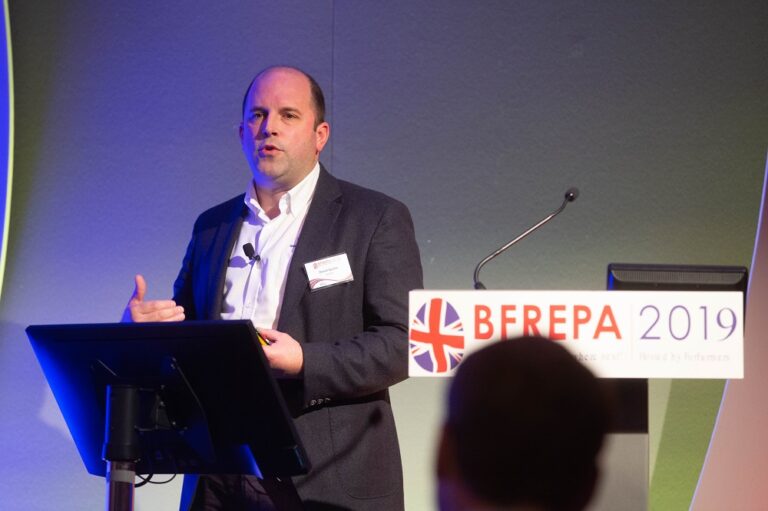Holograms could be used in the poultry houses of the future, with projections of the sky, trees, and even artificial ceilings to improve performance and make birds feel safer.
That was the view of poultry farmer and tech entrepreneur David Speller at the Britsh Free Range Producers Association (BFREPA) conference in Birmingham on 15 October, where he talked about how his experience in introducing new technology to the broiler sector could have applications for free-range egg producers.
Speller started with one broiler farm in 2004 and now contract farms over 1.5m birds at any one time through his company Applied Poultry.
Optifarm, another of Speller’s companies, uses data to manage and optimise farms remotely, checking in to units around the world every 90 minutes. It was now fairly standard in broiler farms to monitor ammonia in real time as well as carbon dioxide. Technology, he said, allows producers to reduce risk; understand more about what’s happening and why; improve consistency of production; keep customers happy; and make money.
Feed costs are 68% of total input costs in broiler production, said Speller, and his farms had an FCR of 1.54:1. Managing data allowed for constant improvement, he said. In New Zealand, better farm design meant FCR of 1.3:1 was possible.
Robotics was an area of massive development at the moment, said Speller. Chicken Boy, which provides an analysis of droppings and dead animals from its position on an overhead rail, was just one example of a useful tool for producers. Speller said pictures of dead birds could be shared with vets and analysis of droppings, and their shape and wetness could be used to help determine gut health.
Free-moving robots can be used to sense the whole environment, said Speller. They can be used to detect air movement, and manage ventilation to optimise bird health.
He also questioned why robots could not be used to carry out post-mortems in the near future, rather than get a vet to spend two hours in a car travelling to a farm. “I get there’s a value at looking at flock, but there’s a lot of this we can automate. If you can put a robot on a packing line, why can a robot not do a post-mortem?”
Speller also discussed the future potential use of augmented reality, such as holograms. “Will chickens walk through a hologram of a wall?” he asked. “What happens if I put hologram of a tree in middle of shed? Or film the sky and put it on roof of shed? Or project sunrise and sunset on the inside of poultry buildings.”
All these things and more – such as augmented reality netting on ranges to stop wild birds – could be a big area of R&D in poultry farming very soon.


